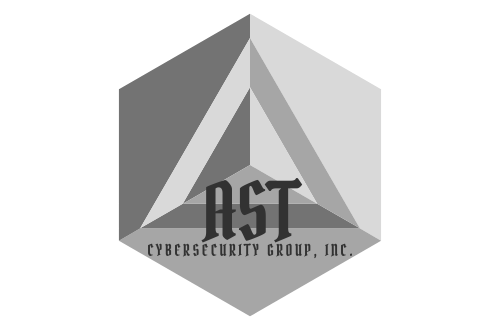In today’s digital age, workplace dynamics have evolved to include online interactions that can sometimes take a dark turn. Cyberbullying, a form of harassment or intimidation using electronic devices and the internet, is not just confined to schools or social media platforms—it can also rear its ugly head in the workplace. Understanding the different ways in which workplace cyberbullying can manifest is crucial for creating a safe and respectful work environment. In this blog post, we will explore the various forms of cyberbullying that can occur in professional settings, the impact it can have on employees, how to identify signs of cyberbullying, and what preventative measures can be taken to address this growing concern. Stay tuned to learn more about this important topic and how you can combat cyberbullying in your workplace.
Understanding Cyberbullying in the Workplace
Cyberbullying in the workplace refers to the use of technology to harass, intimidate, or harm an individual or group of individuals within a professional setting. It involves the malicious use of electronic communication tools such as emails, text messages, social media platforms, and other digital channels to target and undermine employees.
Unlike traditional forms of bullying, workplace cyberbullying can occur both during working hours and outside of the office environment. It can be carried out by colleagues, supervisors, or even external parties. Understanding the dynamics and characteristics of cyberbullying in the workplace is essential for addressing and preventing such behavior.
To gain a deeper understanding of workplace cyberbullying, it is important to examine the common forms it can take, the potential impact it can have on employees, how to identify signs of cyberbullying, and the preventative measures that can be implemented to create a safe and respectful work environment. By exploring these aspects, organizations can develop effective strategies to combat cyberbullying and foster a positive workplace culture.
Common Forms of Cyberbullying in the Workplace
Cyberbullying in the workplace can manifest in various forms, each with its own unique characteristics and methods of harassment. Understanding these common forms is crucial in order to effectively address and prevent workplace cyberbullying. Let’s explore some of the most prevalent forms:
Harassment via Emails and Text Messages
One form of workplace cyberbullying involves the use of emails and text messages to harass or intimidate colleagues. This can include sending derogatory or offensive messages, spreading rumors, or consistently sending excessive and unnecessary communication to overwhelm the recipient. The anonymity and ease of communication through electronic platforms can embolden bullies to engage in such behavior.
Defamation and Gossip on Social Media
With the widespread use of social media platforms, cyberbullies may resort to defaming or spreading false information about their colleagues. This can occur through public posts, private messages, or even the creation of fake profiles. Such actions can damage a person’s reputation, causing emotional distress and potentially impacting their professional standing.
Cyber Stalking
Cyber stalking involves the persistent monitoring and surveillance of an individual’s online activities. Cyberbullies may engage in this behavior to gather personal information, track their target’s online presence, or even harass them across multiple digital platforms. This invasive form of cyberbullying can lead to feelings of fear, anxiety, and a loss of personal privacy.
Online Threats and Intimidation
Another common form of workplace cyberbullying is the use of online threats and intimidation. This can include sending explicit or threatening messages, making harmful comments, or even using digital platforms to incite fear or harm towards a colleague. Such behavior can create a hostile work environment and have serious psychological and emotional consequences for the victim.
Digital Discrimination
Discrimination in the workplace can extend to the digital realm, where cyberbullies may target individuals based on their race, gender, religion, sexual orientation, or other personal characteristics. This can involve hate speech, offensive comments, or exclusionary behavior online. Digital discrimination can undermine the inclusivity and diversity efforts of organizations and create a toxic work environment.
Understanding these common forms of workplace cyberbullying is essential for developing effective strategies to prevent and address such behavior. By recognizing these methods, organizations can take proactive measures to protect employees and foster a culture of respect and inclusivity.
The Impact of Cyberbullying on Employees
Cyberbullying in the workplace can have a significant impact on the targeted employees. It not only affects their emotional well-being but also has consequences for their job performance, workplace relationships, and even financial stability. Understanding the impact of cyberbullying is essential for organizations to recognize the seriousness of the issue and take appropriate measures to support their employees. Let’s delve into the various ways in which cyberbullying can affect employees:
Psychological Effects
Being a victim of cyberbullying can have severe psychological effects on employees. Constant harassment, threats, and humiliation can lead to increased stress, anxiety, and depression. The targeted individuals may experience feelings of isolation, low self-esteem, and even contemplate self-harm. The emotional toll cyberbullying takes can significantly impact an employee’s mental health and overall well-being.
Effects on Job Performance
Cyberbullying can have a detrimental impact on an employee’s job performance. The targeted individuals may find it difficult to concentrate, make decisions, or complete tasks effectively due to the emotional distress caused by the cyberbullying. This can result in decreased productivity, missed deadlines, and a decline in the quality of work. Ultimately, the victim’s professional growth and career prospects may be hindered.
Influence on Workplace Relationships
The presence of cyberbullying in the workplace can create a toxic environment that undermines positive workplace relationships. It can lead to a breakdown in trust, collaboration, and teamwork among employees. The fear of becoming a target or witnessing others being cyberbullied can create a sense of unease and tension within the organization. This can negatively impact employee morale and hinder the overall productivity and success of the team.
Financial Consequences
Cyberbullying can also have financial implications for both the targeted individuals and the organization as a whole. Employees who are victims of cyberbullying may require time off work to address their mental health issues or seek legal assistance. This can result in increased absenteeism, decreased work output, and potential costs for therapy or counseling. Additionally, the organization may face legal consequences, reputational damage, and increased turnover if cyberbullying is left unchecked.
Understanding the various ways in which cyberbullying can impact employees is crucial for organizations to take decisive actions in preventing and addressing this issue. By recognizing the serious consequences cyberbullying can have, organizations can prioritize the well-being of their employees and foster a healthy and supportive work environment.

How to Identify Signs of Cyberbullying in the Workplace
Identifying signs of cyberbullying in the workplace is crucial for organizations to intervene and support affected employees. It is important for managers, supervisors, and colleagues to be vigilant and observant of any potential signs that indicate cyberbullying is taking place. By recognizing these signs early on, appropriate action can be taken to address the issue and provide necessary support. Here are some key indicators to look out for:
Spotting Changes in Employee Behavior
One of the first signs of cyberbullying is a noticeable change in an employee’s behavior. They may become withdrawn, anxious, or display signs of depression. They might also exhibit sudden mood swings, have difficulty sleeping, or show a decline in their overall performance. It is important to pay attention to any significant shifts in behavior and consider the possibility of cyberbullying as a potential cause.
Recognizing Unusual Online Activity
Another way to identify signs of cyberbullying is by monitoring an employee’s online activity. Look for any unusual or excessive communication, particularly negative or aggressive messages directed towards them. Additionally, observe if the employee is avoiding certain social media platforms or suddenly deleting their online presence. These behaviors can indicate that they are being targeted or harassed online.
Identifying the Perpetrator
While cyberbullying often occurs anonymously, it is important to try and identify the perpetrator. Look for any conflicts or tensions within the workplace that could potentially lead to cyberbullying. Pay attention to individuals who exhibit aggressive behavior or have a history of mistreating others. It may also be helpful to review digital communication records and examine patterns of harassment or intimidation.
Recognizing the Signs of a Toxic Digital Environment
In some cases, the entire workplace may foster a toxic digital environment that enables cyberbullying. Look for signs of widespread negativity, frequent conflicts, or a lack of respect in online communication channels. If there is a general atmosphere of hostility and cyberbullying is tolerated or even encouraged, it is crucial to address the underlying cultural issues within the organization.
By actively observing and recognizing these signs, organizations can take the necessary steps to address workplace cyberbullying promptly. It is important to maintain open lines of communication, encourage a supportive work environment, and provide resources for employees to report instances of cyberbullying confidentially. Creating a culture of trust and empathy is essential in both preventing and addressing cyberbullying in the workplace.
Preventative Measures and Solutions to Workplace Cyberbullying
Preventative measures and solutions are key in addressing workplace cyberbullying and creating a safe and respectful working environment. Organizations should take proactive steps to prevent cyberbullying from occurring, as well as establish clear guidelines and procedures for addressing incidents when they do occur. Here are some effective strategies to consider:
Implementing a Robust Cyberbullying Policy
Developing a comprehensive cyberbullying policy is essential. This policy should clearly define what constitutes cyberbullying, outline the consequences for engaging in such behavior, and provide guidelines for reporting incidents. It should be communicated to all employees and regularly reviewed and updated as needed. By having a strong policy in place, organizations can send a clear message that cyberbullying will not be tolerated.
Educating Employees about Cyberbullying
Raising awareness and educating employees about cyberbullying is crucial in preventing such behavior. Conduct regular training sessions or workshops that focus on identifying cyberbullying, understanding its impact, and promoting a culture of respect and empathy. Provide employees with the tools and resources to recognize and report incidents of cyberbullying, and ensure they understand the importance of maintaining a safe and inclusive work environment.
Encouraging Open and Safe Communication
Creating an environment where employees feel safe to speak up about cyberbullying is essential. Encourage open and honest communication channels where individuals can report incidents confidentially and without fear of retaliation. Establish a process for reporting and investigating complaints, ensuring that all investigations are carried out promptly and impartially. Encourage bystander intervention and empower employees to support their colleagues in addressing cyberbullying.
Regularly Monitoring Digital Communication
Organizations should implement measures to monitor digital communication channels to identify potential instances of cyberbullying. This can include reviewing email and chat records, monitoring social media platforms, and utilizing technology solutions to detect inappropriate or harmful content. Regularly monitoring digital communication not only helps identify cyberbullying incidents but also acts as a deterrent for potential offenders.
Taking Appropriate Action Against Offenders
When incidents of cyberbullying are reported and confirmed, it is crucial for organizations to take appropriate action. This may include disciplinary measures, such as warnings, counseling, or even termination, depending on the severity of the offense. It is important to ensure that all actions taken are consistent, fair, and in line with the organization’s policies and legal requirements. By holding offenders accountable, organizations send a strong message that cyberbullying will not be tolerated.
By implementing these preventative measures and solutions, organizations can create a workplace culture that prioritizes respect, inclusivity, and safety. Addressing workplace cyberbullying requires a collective effort from management, employees, and relevant stakeholders to create an environment where such behavior is not accepted and all individuals are treated with dignity and professionalism. Contact AST Cybersecurity today and let us help you keep your workplace safe!

